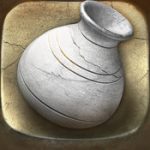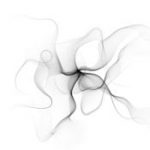How to run a creative workshop based on Cypriot Pottery
Artwork by , created in Acquired 1884
About this activity
Workshop themes
- Ceramics
- Decoration
- Mediterranean
- Trinkets or possessions
Suitability
- Suitable for groups
- Suitable for one to one
Difficulty level
Medium

Skip to section
Introductions
Materials
- Name badges (for all participants and staff).
- Oils or cream for a hand massage.
Method
- Go around the room and make eye contact with everyone, shake their hand and say hello.
- Spend time showing people how to warm up their hands by doing some simple hand massage movements
simple hand massage movements
- If you felt the group were comfortable with each other, participants could be asked to take turns in pairs with one another.
- Oils or cream could be used for the hand massage. Personalise the hand massage by asking each member of the group to choose a scent of their choice.
- In pottery the hands are the main tool, therefore the focus of this session will be on the hands and getting them warmed up!
Please note that some research may be required if you are using certain aromatherapy oils. Be careful with any allergies that people may have with the oils, or people that you may gift the bath bombs too. Also note that some essential oils are not good to work with during pregnancy i.e. These include fennel, clary sage, marjoram, tarragon, caraway, cinnamon, thuja, mugwort, birch, wintergreen, basil (estragole CT), camphor, hyssop, aniseed, sage, tansy, wormwood, parsley seed or leaf, and pennyroyal. (please check with a health professional if you are unsure)
TimeSlips™
Materials
- Flipchat and pen
- An image of the artwork (can be viewed in the app or printed from this link )
Method
- Look at the artwork using the Armchair Gallery app.
- Welcome and invite the person or group to create with you and write their answers on the flip chart. Ask open-ended questions (like in the list to the right).
- Affirm/echo all their answers - together we build a story that can have sound, movement, words - even drawings.
- Retell the story, then invite them to add another creative element like sound, or movement.
Suggested Questions
- What is going on in the picture?
- Which part of the world do you think they are from?
- How old do you think they are?
- How do you think these were made?
- What colours can you see on the pots?
- How do you think the pots were decorated?
- What do you think the holes are used for?
- What would you call this type of pottery?
Play this video
Workshop members can watch this on their own tablet, or you can play it to the group by connecting your tablet to a TV or projector. It can also be downloaded from the Armchair Gallery website.
Interact with the artwork
At this point in the workshop participants should have a go at using the app to interact with the artwork. From the main menu, enter Pitt Rivers Museum, select Cypriot Pottery and tap Interact and play.
Multi-Sensory Exploration, Part 1
Materials
- Laptop or iPad and speakers to play rhythmic sounds.
- Halloumi cheese.
- Different types of clay (i.e. wet, dry and glazed).
- Transfers.
- Paper.
- Pencils.
- Wax crayons.
- Watercolours.
- Fresh mud or a bag of compost.
- Clay.
- Diffuser with pine wood oils.
Sound
- Find an instrumental piece of music that is rhythmic and a sound that will give the impression of the potter’s wheel. This will create a relaxing atmosphere, to evoke the relaxation that you might feel when on a potter’s wheel.
- You could play this relaxing themed piece of music.
relaxing themed piece of music.
Multi-Sensory Exploration, Part 2
Taste
- Hand around some small pieces of halloumi cheese.
- The taste is a connection to Cyprus, the origin of the Cypriot pottery. Ask people what it is and where it is from?
Touch
- Thinking about the various stages of pottery, pass around textures of the clay at different stages. Soft clay, air-dry clay, terracotta clay, white, grey, brown and glazed clay.
- Passing around different coloured and textured clay will inspire conversation and debate about the tactile properties of each of the different stages of pottery making.
- Having clean/dirty options to hand around too will work well. Remember, some people don’t like getting their hands dirty! Make sure you have various options i.e. glazed and soft clay.
Multi-Sensory Exploration, Part 3
Sight
- Using transfers, begin scratching or drawing the designs onto different surfaces to create patterns. Build up layers and patterns using a variety of different transfers.
- Start with transferring these onto paper and then move on to a 3D surface, e.g. a plant pot or piece of glass?
- Using a wax crayon (ideally white), draw onto a piece of paper, making patterns or various marks. You could take inspiration from the Cypriot pottery to do this. Then using watercolours put a wash of colour on top of your wax crayon. You will see it will create a wax resist and it is quite a magical process. This will give the impression of layering and aims to inspire the group to think about how the Cypriot pottery is made.
Smell
- Burn some incense or use a diffuser with oils that give the impression of smells like smoke, pine or oak wood, This will reflect the atmosphere of a pottery workshop.
- You could take in some fresh mud or compost to smell. This will give the same impression as clay with its fusty, outdoor odour.
Making: Sgraffito Tile
Making: Sgraffito Tile
Sgraffito is a form of decoration made by scratching through a surface to reveal a lower layer of a contrasting colour, typically done in plaster or stucco on walls, or in slip on ceramics before firing. Sgraffito Tiles typically use patterns and repetition that are similar to the designs found on the Cypriot pottery that is displayed at the Pitt Rivers Museum in Oxford.
Materials
- Ceramic tiles.
- Acrylic paint.
- Cotton buds.
- Paint brushes.
- Clay tools or cocktail sticks (to scratch into the clay).
- Varnish.
Method
- Using a large brush, cover the ceramic tile in your chosen colour of acrylic. If you use an orange tone, for example, this is similar to a traditional Cypriot tile. Using the same direction of brush strokes distribute the paint evenly all over the tile. You will find is easiest if the paint is thick.
- Taking inspiration from traditional Cypriot style and design, draw in patterns using a cotton bud. The acrylic paint in these areas will be removed so that the pattern will be exposed.
- You can use cocktail sticks too to create finer details and lines amongst the cotton bud marks.
- Continue to add patterns until the whole tile is covered using lines, spots and zigzags etc.
- Leave your tile to dry for at least 2 hours and then add a clear varnish to protect the tile.
- You could explore layering even further. Add one layer and wait for it to dry, then add a secondary colour and draw patterns int he same way. Continue this process as many times as you like for an effective Cypriot pottery look.
Celebration
Think about how your Sgraffito tiles could be used in your environment. Could they be used as tiles in the kitchen, as coasters in the lounge or as an outdoor decoration in the garden area?
Ask participants what they would like to do with them and suggest some ideas too. This will provide the group with a sense of pride and achievement.
Finally…
Getting Materials
You should be able to get most of the materials mentioned in this guide at your local arts supplier.
They are also avaiable on Amazon. If you shop via Amazon Smile (using the button below - UK only), then we will recieve a donation that we can put towards our work with older people.
Other Apps
You could use these other apps to further explore digital technology in your workshop.



